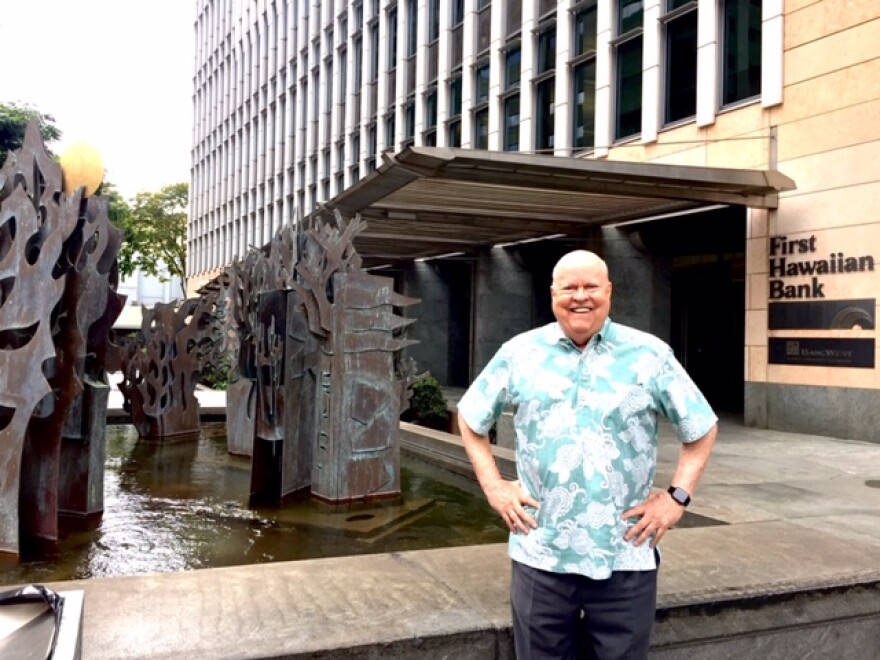Ten local art connoisseurs got together recently to choose 25 Top Picks at the Hawai‘i State Art Museum, or HiSAM. Their goal is to lure everyone into HiSAM, for fresh perspectives on art in our state. HPR’s Noe Tanigawa asked two of the connoisseurs you probably know, about how they discovered art and what they get out of it.

View Top Picks from the Hawai‘i State Art Museum online, and vote for your favorites in the HiSAM collection, too. Find images and links at hawaiipublicradio.org . Tonight First Friday festivities are on at HiSAM and throughout Chinatown.

Yesterday, the galleries at HiSAM were abuzz with kids, just the way they’re supposed to be. There’s a show of recent acquisitions up, and the latest Regional Scholastic Art Award winners too. State Senator Brian Taniguchi has been a champion for the arts, the whole thirty plus years he’s been in in state government, and currently sits on the Senate Labor, Culture, and the Arts committee. He was one of the art connoisseurs asked to choose his Top 25 from all the State’s art holdings. It wasn’t easy!
Taniguchi: I think what I learned was that I liked a lot more diverse things than I thought I would. From photorealistic to abstract, you know.
What made you like them?
Taniguchi: Like the Zuni tribe says with Zuni fetishes. The fetish will call to you to get it. It’s like with this Isami Doi, you just get a feel for it, the art kinda speaks to you or talks to you.
Sky Mountain by Isami Doi sits directly across Taniguchi’s desk.

Taniguchi: This one, when I’m here it calms me down. I look up, and it calms me down.
But how does that happen?
“Well I’m a local boy, started from the streets, Art was the furthest thing from my mind.”
However, Walter Dods, retired CEO of First Hawaiian Bank and BancWest, says his friend, Wesley Park, was an art lover.
Dods: So he forced me to go out to Sand Island with him. And we spent hours with Bumpei Akaji at his little workshop. Drink Beer and talk story. Through Wesley I started to gain an appreciation for art.
Dods met John Young through Park, then he met Satoru Abe, Tadashi Sato, and others in the infamous Chateau Metcalf group of early Honolulu modernists.

Dods: I got to know them first as human beings, and I liked them and I liked their character. Many of the artists from that period, got their start with the GI Bill. The GI Bill had more to do with the modern art in Hawai‘i! if you go to the HiSAM Top 25, the Akaji’s, the Doi’s, most of those people got their start with the GI Bill, so in effect Uncle Sam played a big role in art in hawiai by giving them a chance to study,. Bumpei went to Europe and studied with sculptors in Italy, and Paris, they had some interesting experiences.
Dods’ wife, Diane Dods, was a devoted art supporter. She and Joan Clarke published Artists/Hawai‘I, a collection of works and profiles of key Hawai‘i Artists.
Dods: Most local kids were never exposed to art. So it’s somehow that break, a schoolteacher, a friend, an excursion, something that gives you that chance to see art. You gotta have that little spark. That’s why I helped put this gallery together. You have to make art accessible.

The Honolulu Museum of Art at First Hawaiian Center has shown hundreds of local artists since 1996. Dods heads down through the galleries, and out to Satoru Abe’s sculpture, “Eternal Garden” fronting the building on King Street. Dods stands at the hub of Honolulu’s business district and raises his arms.
Here you have Abe’s organic tree-like forms, and diagonally across the street, Bumpei Akaji’s bronze sails and water. On the Diamond Head ma uka corner, a Henry Moore figure stands in Tamarind Square, and the huge bronze Bernard Rosenthal disk completes the foursome, fronting Bank of Hawai‘i.
Dods: You have two local boys and two international artists at the corner of King and Bishop. I find that pretty cool.
Who is going to put our local guys toe to toe with the international competition---if we don’t?






